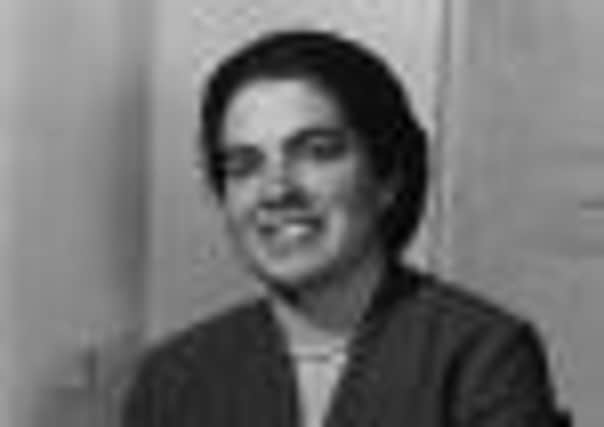Obituary: Elspeth Buchanan, painter whose talents led her to heart of naval intelligence operation during the war


Elspeth Buchanan was a prolific painter whose talents took her to the heart of Britain’s secret naval intelligence operation during the Second World War.
A graduate of Edinburgh College of Art, she was recruited as a draughtswoman to help compile maps and charts for handbooks, containing vital information on entire countries, which were used by all of the armed forces during the Allied war effort.
Advertisement
Hide AdAdvertisement
Hide AdLittle was known of the activities of the female geographers – dubbed the “Map Girls” – at the time, due to the sensitive nature of their work. And it was not until decades later that the significance of their contribution became apparent.
Born in Bridge of Weir in the middle of the Great War, she was the daughter of John Buchanan and his wife Evelyne, the renowned Scottish portrait and landscape artist known as Oughtred Buchanan.
The family – which included her elder brother Ian and younger brother and sister, Maitland and Brenda – had moved to Edinburgh when she was small and she was educated at the capital’s St George’s School between 1923 and 1933.
There she was already displaying the signs of becoming an accomplished artist and took extra art classes on Saturday mornings to nurture her talents.
She went on to study at Edinburgh College of Art from 1933 to 1938 before winning a travelling scholarship and spending the next year in France and Italy. In the summer of 1939, she was in Finland, helping to look after the children of a family there and unaware that war was about to break out at home.
She made it back on one of the last boats and went on to do her teacher training at Moray House in Edinburgh, teaching in Aberdeen before being taken on by the naval intelligence division of the Admiralty in Oxford.
Lives depended on the information in the naval handbooks and a whole series was produced between 1941 and 1946. The work drawing detailed maps could be quite arduous – requiring long hours, extreme accuracy and speedy production.
During her time in Oxford, she also studied art under the Ukrainian artist Bernard Meninsky and later had some of his works in her home. After the war she returned to teaching and worked in Essex from 1947 to 1950. She later returned to Edinburgh where she taught art part-time at Cranley School for Girls until retiring from teaching in 1972.
Advertisement
Hide AdAdvertisement
Hide AdContinuing to paint – she had two studios, one in Leith, the other near the Royal Botanic Garden – she exhibited widely: at the Royal Academy, Royal Scottish Academy, the New English Arts Club and the Royal Glasgow Institute of the Fine Arts.
She also had a solo exhibition at Edinburgh’s Torrance Gallery and a three-person show at the Great King Street Gallery in the capital with her mother and her brother-in-law, the English artist Nicholas Horsefield. In 1985, she sold numerous paintings to galleries in London and Norfolk.
In her youth, she had concentrated on more figurative work, but her style changed to focus more on Scottish landscapes in both watercolour and oils and she drew inspiration from painting holidays on Arran, Iona and in Plockton.
She lived at home until her mother’s death and then lived and painted near the Botanics where she used to walk every day.
A regular attender of the Edinburgh branch of the Soroptimists, she was also a member of the Scottish Society of Artists and the Scottish Society of Women Artists and continued to paint until well into her 80s.
Latterly, though living in a care home, at 95 she still cut a slightly bohemian figure, wearing her long hair wound round her head in a plait as she sketched contentedly in her room.
She is survived by 12 nieces and nephews.
ALISON SHAW